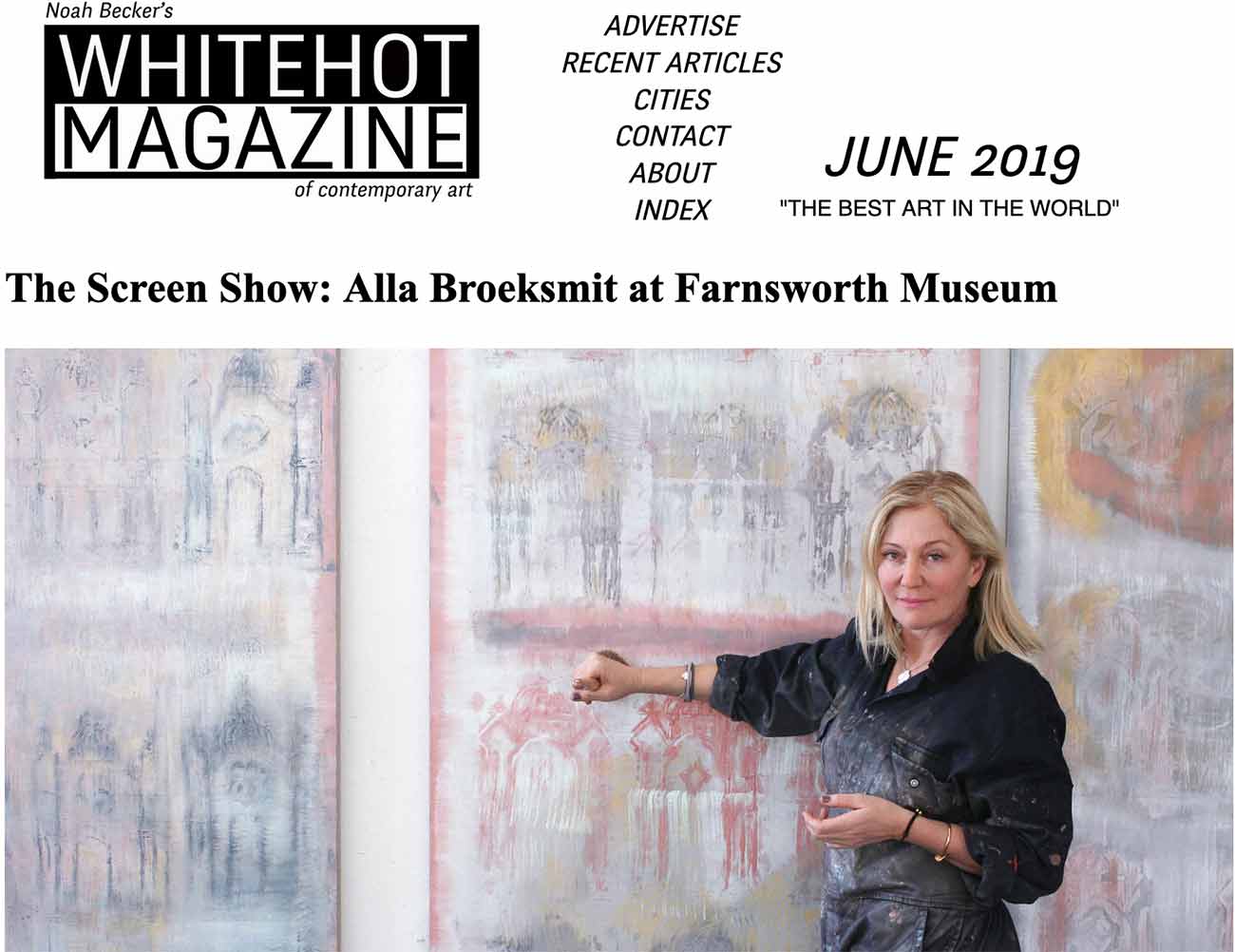
The Screen Show: Alla Broeksmit at Farnsworth Museum
February 9 – September 22, 2019
By CHARLENE STEVENS, June 2019
Thumbnail photograph credit: Monika Drzewicz
The Screen Show at the Farnsworth Museum in Rockland, Maine is a juried exhibition of six contemporary works of art displayed alongside two early 20th-century folding screens from the Farnsworth collection. The latter pair—the eight-panel Manship Toasting the Angels (1923) and a three-panel oil on canvas painting by Carroll Thayer Berry—have served as a departure point for this exhibition of contemporary interpretations of the screen form.Folding screens were particularly popular in the late 19th and early 20th centuries and typically served as room dividers or as barriers behind which their owners could dress or undress out of sight. Beyond their functional dimension, such screens have also been the basis for artistic experimentation. Prominent European and American artists, architects and designers—including James McNeill Whistler, Thomas Dewing, Louis Comfort Tiffany, Thomas Hart Benton, Donald Deskey, Ansel Adams, Jim Dine, Helen Frankenthaler, Robert Rauschenberg and David Hockney—are among many who have explored the form of the folding screen.
Alla Broeksmit’s work Midway is from a series entitled COMPASSES from her MFA Thesis Exhibition at the New York Studio School in 2017. The series incorporates forms and symbolism from the artist’s memories, especially from her childhood and the journey from the Ukraine to the United States. Distant memories like these are not always clear and crisp; they often have blurred edges. Memories can bleed into each other, creating clusters based on a common element. They can also focus in on a singular detail while everything that surrounds it falls away to make that detail the only thing left. They are not always based on the visual. The olfactory and the tactile often take precedence. The visual can be a sketch, a suggestion without clean lines or clear boundaries. Sometimes those memories appear as if behind the veil or a layer of the fog of time.
Broeksmit’s colors recall faded Italianate frescoes of the Renaissance or earlier, pigments ground into plaster half a millennium ago or more that somehow manage to persist despite the ravages of time. Broeksmit mixes her own pigments as the old masters did in the age before paint tubes, giving vibrant piles of colored dust permanence and meaningful form. The painting’s four-panel folding screen format resembles that of a Renaissance altarpiece, albeit without a central panel from which the others could swing away. This composition is decentralized, not focused on any central point but on the relations between adjacent elements: panels mirror each other, fields of color blur and merge and flow, circular symbols wax and wane, coalesce and fade away.
Read the full story, click here


